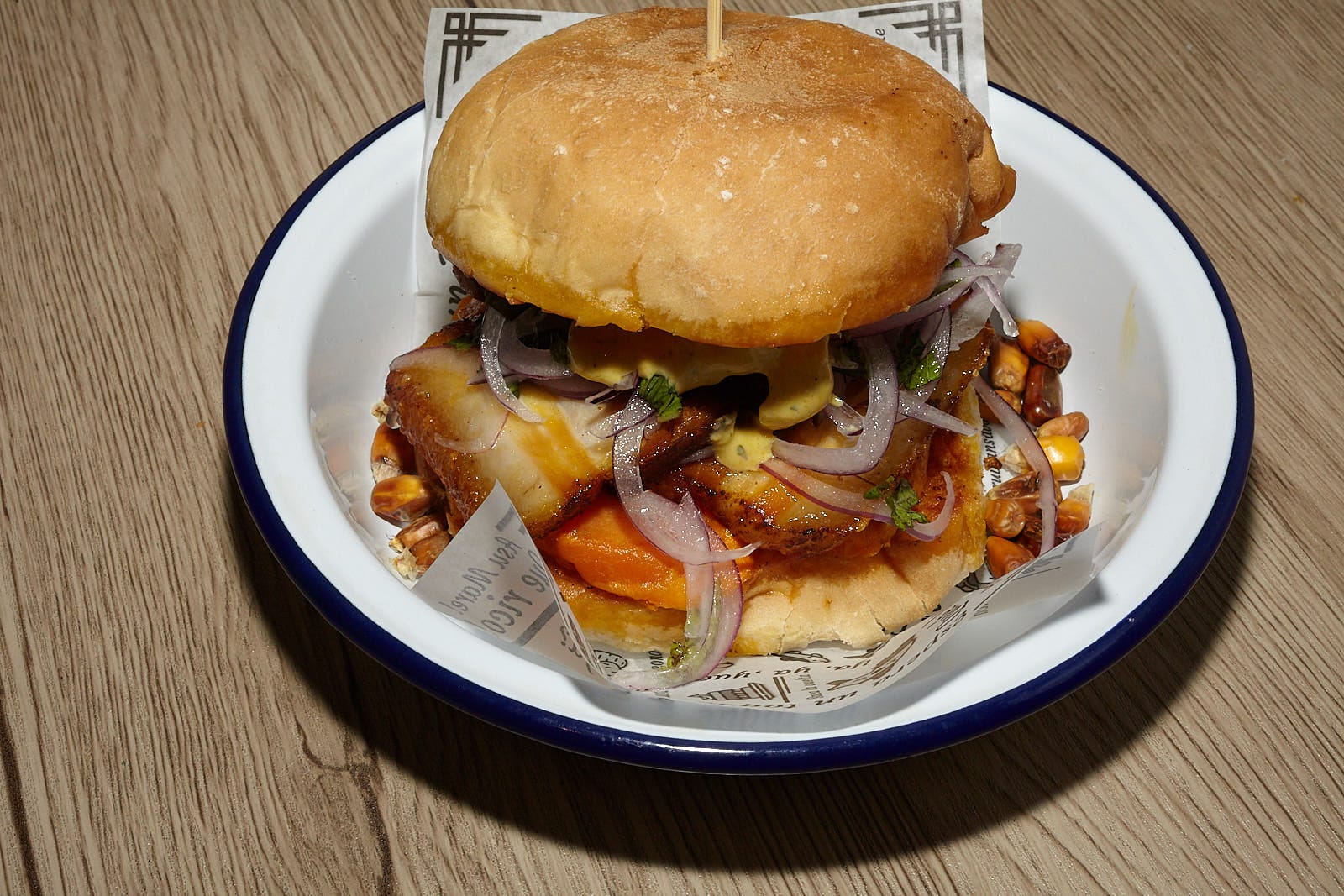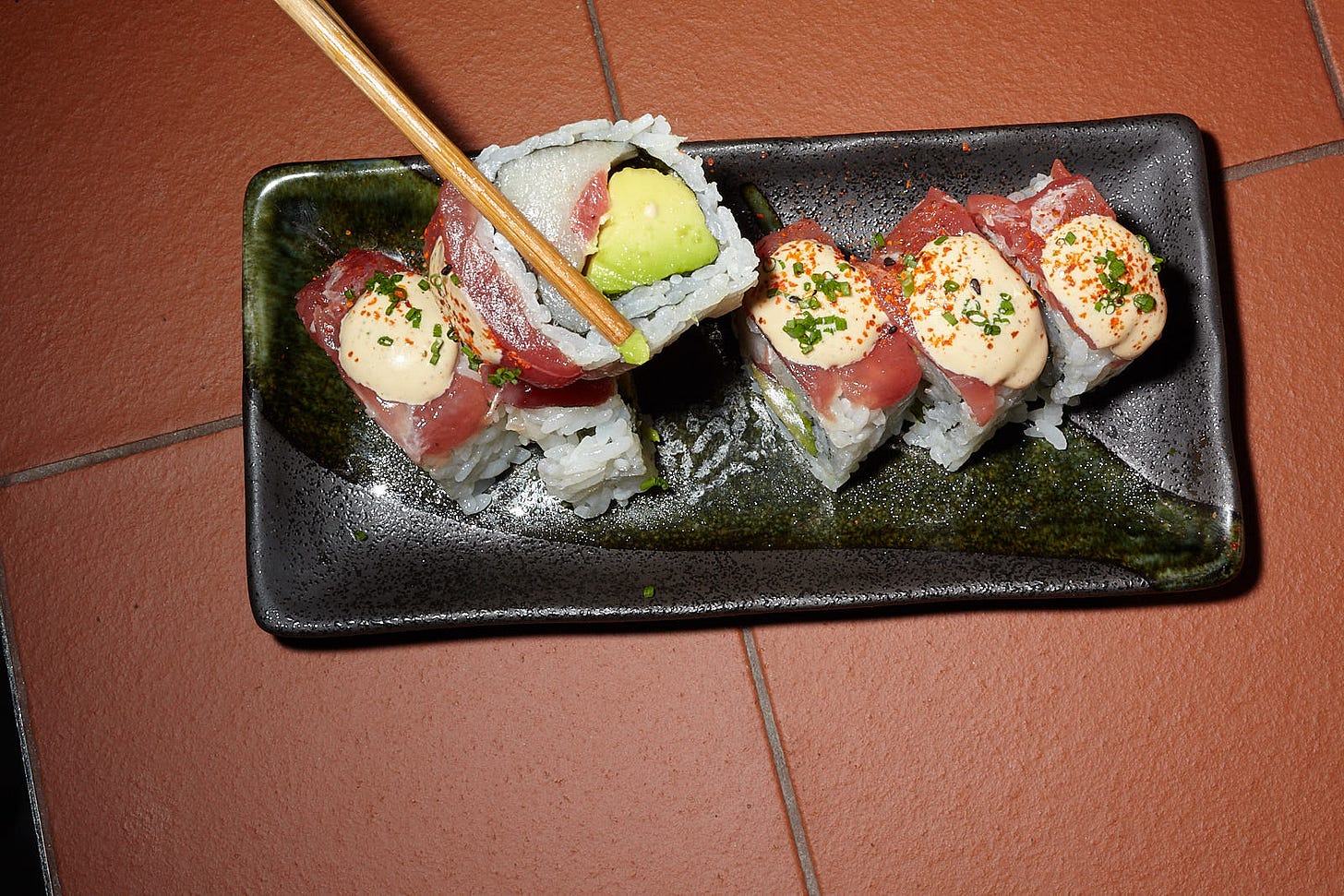What can Peruvian cuisine teach London restaurants?
Hester van Hensbergen visits two London Peruvian restaurants mapping different traditions of fusion. Photographed by Michaël Protin.
Welcome back to Vittles Restaurants. Today’s review is by Hester van Hensbergen.
In case you missed it, we released a new episode of our podcast yesterday with Vittles Restaurants editor Adam Coghlan in conversation with Ruby Tandoh. You can listen to it here.
To read more reviews, London and Paris restaurant guides, our recipe collection, and access the complete Vittles archive, please subscribe below.
Every decade or so, someone points out that Peru has the original fusion cuisine. Chifa, the Chinese and Peruvian fusion that developed after immigration from the mid-19th century onwards, sits alongside Nikkei, the repertoire of sushi and omakase-style restaurant cooking that resulted from the migration of Japanese agricultural workers beginning in the late 19th century. Chifa has been the more influential of the two when it comes to everyday cooking. Dishes like arroz chaufa and lomo saltado can be found in the majority of London’s more casual Peruvian spots, like Tierra Peru and Peruvian Corner. Nikkei, meanwhile, has captured the haute cuisine market, most famously when Japanese chef Nobu Matsuhisa drew on it to launch his luxury restaurant brand Nobu in the mid-1990s.
When Peruvian food first became explosively popular in London in the early 2010s, Cantonese and Japanese fusion weren’t the main focus. The summer of 2012 was the summer of Ceviche, Martin Morales’s restaurant on Frith Street, which was credited with popularising the dish of the same name. The more homely Tierra Peru in Islington opened the same year, and so did Lima London in Fitzrovia. The latter had become the first Peruvian restaurant in Europe to win a Michelin star by 2014, and in the same year, Pachamama Group opened its eponymous first restaurant in Marylebone. It helped that Peruvian cuisine was becoming the darling of global elite gastronomy and coming into its own when high-concept celebrations of hyper-local, rarefied ingredients were all the rage. Peruvian fine dining restaurants flourished in the West End, while informal family-run places cropped up in the Latin American hubs of Seven Sisters and Elephant and Castle.
Today, Chifa and Nikkei are London cuisines, but their territories are different. Between Chifa and Nikkei, one offers warmth, while the other skews cool; one is accessible, the other exclusive. Yet they both share a unique capacity to fuse companionably and conspiratorially with the rest of the Peruvian kitchen to produce something which, if nothing else, will never fail to be interesting. London’s restaurant climate may be in a bad way right now, with high food and energy costs and dampened demand, yet recently eating at two Peruvian restaurants – one Chifa and one Nikkei – has made me wonder: is there something Peruvian food, one of the world’s most adaptable cuisines, can teach London restaurants about thriving in these straitened times?
“Held together with a BFG’s toothpick, it contained an unruly landscape of pork belly sliced and fried to ragged umber arches, yielding slabs of sweet potato and an acidic backcombed pile of red onion. All of it bathed in the sunlight of an ají amarillo sauce that tasted like the ghostly sister to a passionfruit. This is the kind of sandwich that’s so much better than it needs to be”




